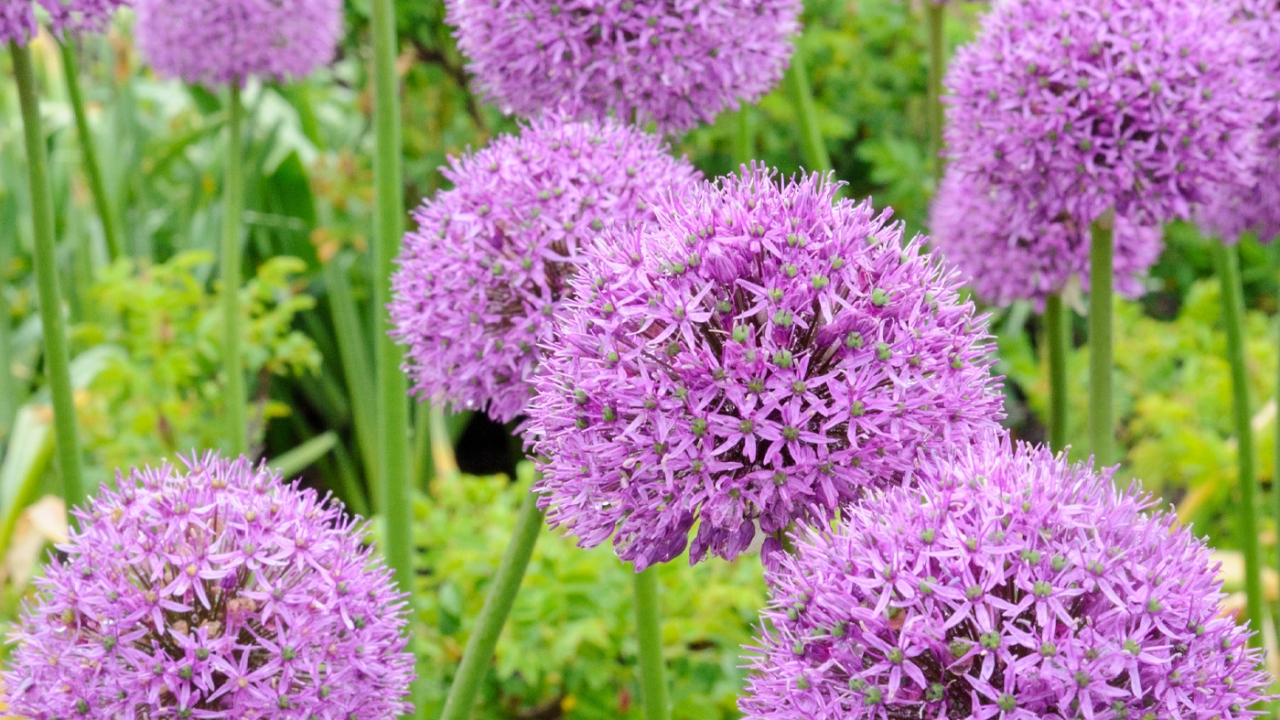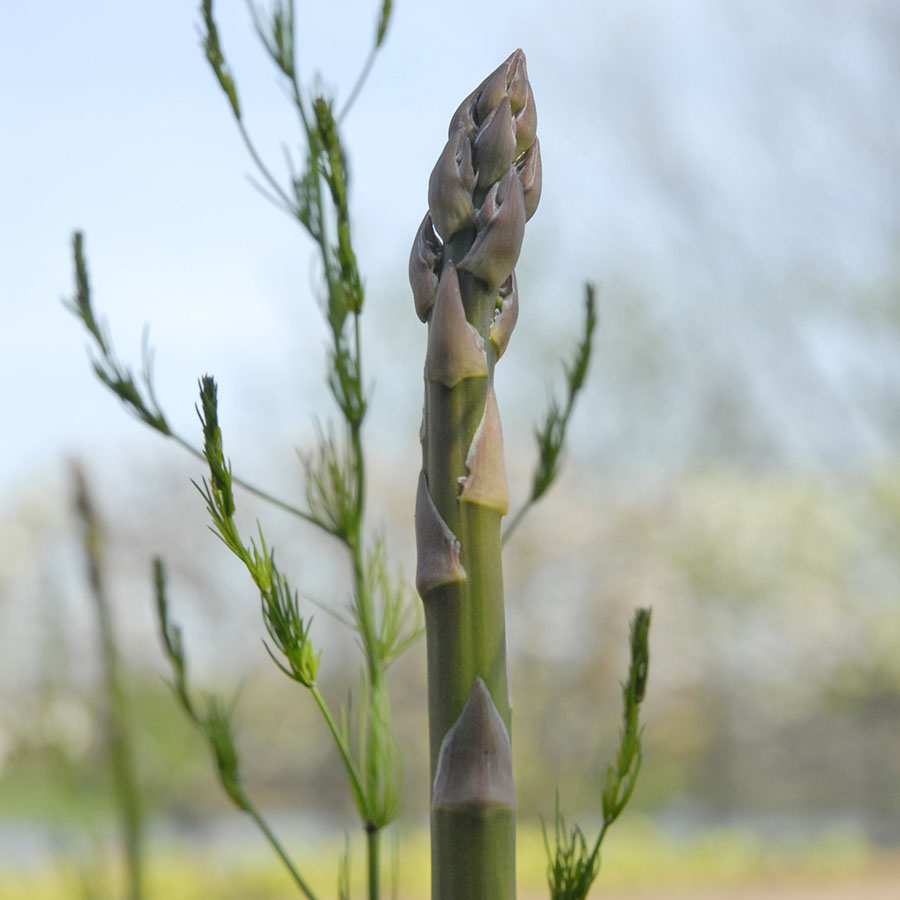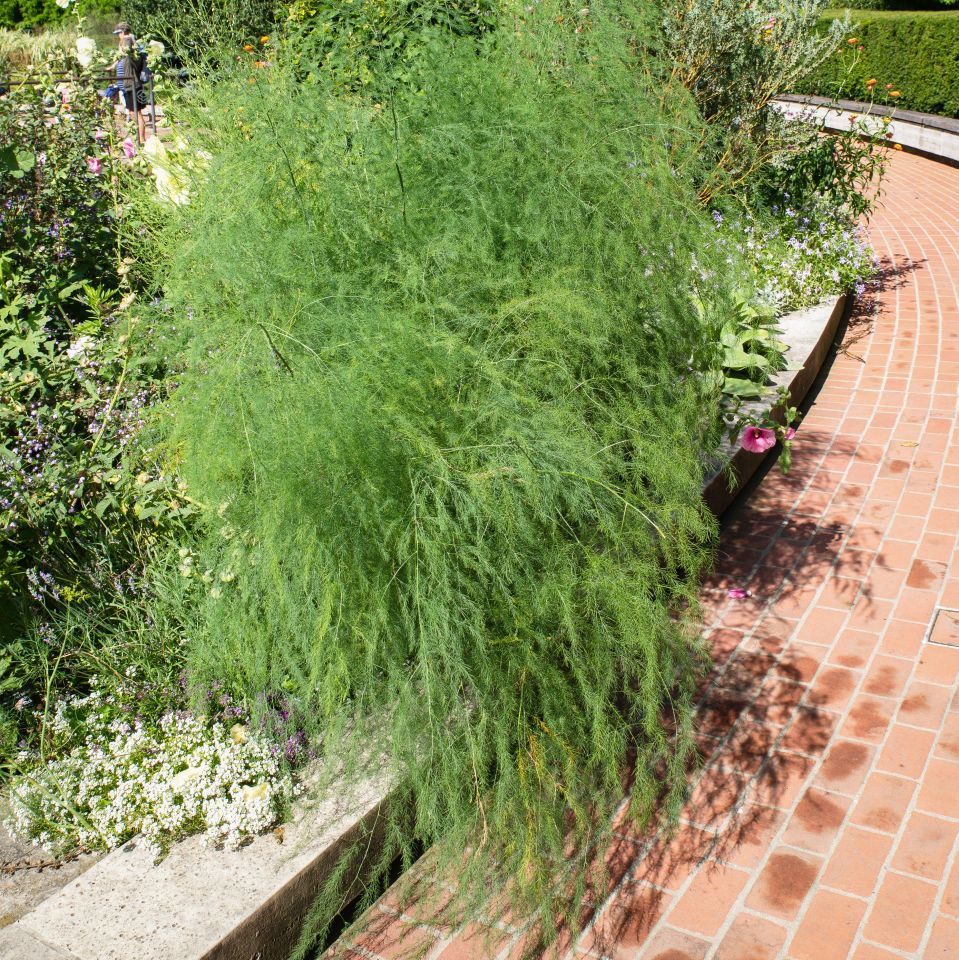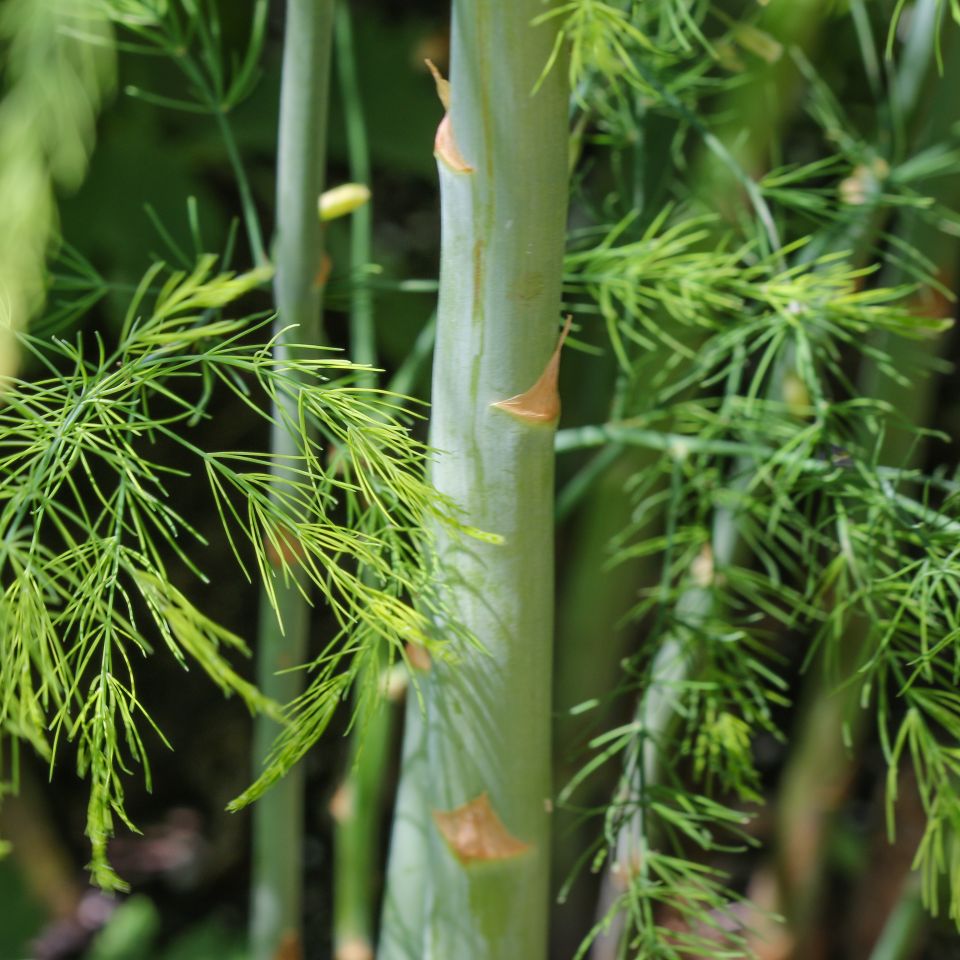

Plant Profiles
Asparagus
Asparagus officinalis
One of the most nutritious, ornamental and anticipated early spring vegetables is asparagus (Asparagus officinalis). This Mediterranean native has just 20 calories a serving, with high doses of vitamins A and C, potassium, phosphorus and iron. Nothing tastes as fresh and sweet, even when eaten right out of the garden, as do these beautiful green stems.
The Romans were responsible for taking wild asparagus and cultivating it into an edible form 2,000 years ago. Asparagus traveled through Europe during the Renaissance, and as early as 1670, "forced asparagus" (harvested earlier than usual) was sold in London markets. Its appearance has changed over the years from skinny, tall, narrow stems (much like the wild type) to the fatter, thicker stems that were popular in the eighteenth century.
Growing
Asparagus is a sun-loving, hardy, long-lived perennial with creeping rhizomes and upright stems that appear in early spring as fleshy shoots (the part we eat). Chicago weather is ideal for growing asparagus. Since well-drained, fertile soil is a must, hard clay soils should be amended in fall with compost, or asparagus can be planted in raised beds.
It takes five years for a planting to become mature. Since asparagus plants can live for more than 20 years, site them where they can grow undisturbed, such as at the end or border of a vegetable garden. Plants can be male or female, with male plants bearing the best and most flavorful crops. New gardeners might want to choose crowns (or plants) of one of the newer male hybrids. These hybrids can be lightly harvested one year earlier than heirloom varieties or those grown from seed (wait three years before cutting those).
Planting
Asparagus is a cool-season crop best planted in early spring as soon as the soil can be worked. Dig a trench 8 inches deep and long enough to accommodate a standard order of 12 to 25 crowns. Place one-year-old crowns in a trench 8 inches deep and 15 inches apart, fanning the roots in all directions. Cover with no more than 4 inches of soil. When ferny foliage pokes through, add the remainder of the soil. Leave 40 to 48 inches between rows. At the Chicago Botanic Garden's Regenstein Fruit & Vegetable Garden, asparagus crowns are spaced 24 inches apart.
Harvest
Make a very light harvest, lasting only one to two weeks, of newly planted crowns during their second year. Plants that are three years old can be harvested for three weeks, and four-year-old plants can be harvested for six weeks. A five-year-old mature patch can be harvested for 10 weeks, from late April to mid-June. Asparagus harvested after this 10-week window will be bitter and tough.
Harvest when the stems are 8 to 10 inches tall and the tips are tightly closed. Asparagus can be snapped off by hand, cut with a knife or removed with an asparagus fork, all at ground level. A 1-foot row will yield a pound of asparagus.
After harvest, the stems will continue to grow between 4½ to 6 feet tall and the plant will form ferny leaves. The next year's crop depends on the foliage staying healthy during summer and fall. Mulch and water these plants during dry spells.
Varieties
Asparagus can be white, green or purple (turns green in cooking). White asparagus results from covering or blanching the plants with either soil or a basket as they grow. By blocking sunlight from reaching the stems, chlorophyll doesn't form and the stems remain white. These sweet, soft stems are very popular in Europe (and very expensive at the market).
Visit
Visit the Regenstein Fruit & Vegetable Garden in early to mid-April to see the different stages and varieties of recommended asparagus, including the following cultivars: 'Mary Washington', 'Jersey Knight', and 'Purple Passion'.




